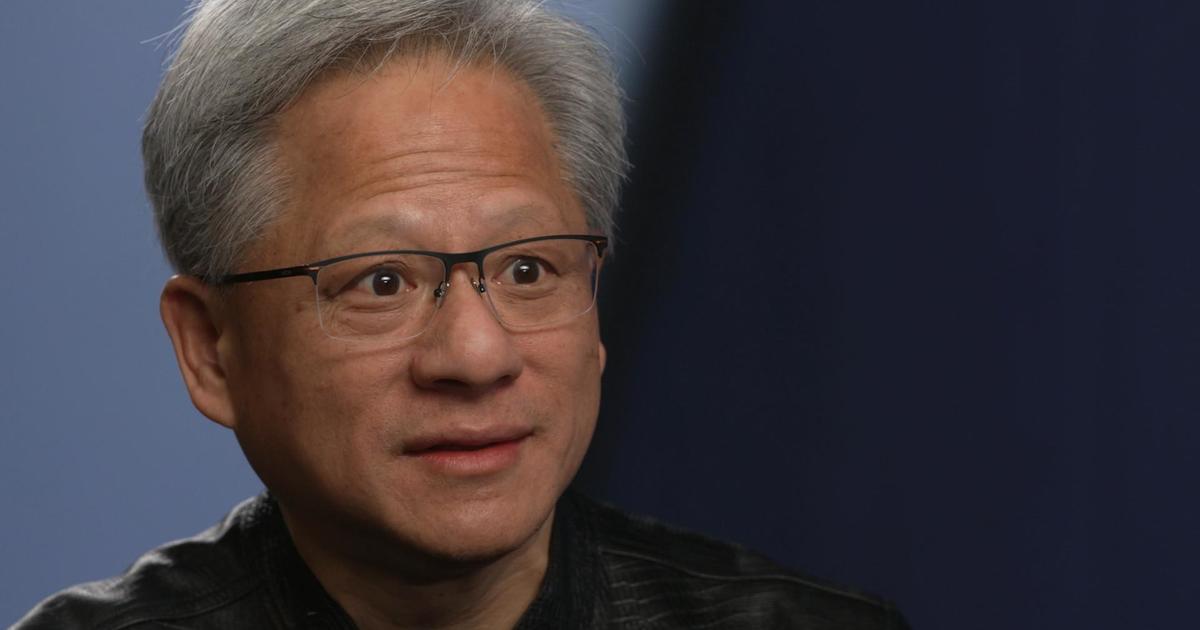Margaret Mead was among the most famous scientists of the 20th century. Despite this, however, her role in the early history of psychedelic research has gone strangely unnoticed.
In this excerpt from my new book Tripping on Utopia, Margaret Mead, recently returned from months of anthropological fieldwork studying an apocalyptic religious movement known as the Noise on the remote island of Manus, becomes involved in the early LSD experiments of Harold Alexander Abramson—and begins planning to take the drug herself.
Summer, 1954
With her paper-cluttered desk spotlit underneath a pendant lamp, Margaret Mead’s office in the western turret in the American Museum of Natural History resembled a Broadway theater set. All around her in the shadows hung masks and carved figures, as if the museum dioramas from the floors below had begun to creep into her workspace.
Back in her spiritual home after spending the last six months of 1953 in Manus, she felt refreshed, confident. She was already thinking through her book about her experience; New Lives for Old would be the title, and it would describe the Noise, an apocalyptic religious movement which spread through the island of Manus, which lies northeast of New Guinea, in the aftermath of World War II. In 1947, a prophet had emerged on Manus who predicted a coming age of abundance, even immortality. But first, the old ways had to be cast out. Reports poured in of visionary experiences, trance states, even seizures. Hats of colonial officials were ritually burned, and a coming age of abundance was proclaimed. Mead found the Noise fascinating because she saw it as a prelude to other new cultural forms which she believed would appear elsewhere as a response to the rapid changes of the 20th century—including in the United States. She saw the movement in relatively benign terms. True, it really was an apocalyptic cult, she wrote, complete with mystical “prophetic dreams” and the promise of “a utopia to be immediately established on earth.” But who said utopian dreams were entirely bad?
Slate receives a commission when you purchase items using the links on this page.
Thank you for your support.
For Mead, this was not just a matter of survival in one village on one island. All human societies, everywhere, needed to learn to change in similar ways and with similar speed, avoiding the excesses of what she called “the apocalyptic cult aspect” but also recognizing that, as she later put it, “conscious intervention in the process of cultural evolution and human survival” was now the most urgent task that humanity faced. This was the goal of her science. And the things she saw and heard in the spring and summer of 1954 made her think that psychedelics might be part of it.
Mead’s most important source for information about psychedelics at this time was Dr. Harold Abramson, an allergist and expert in “psychosomatic” illnesses. Among other things, Abramson had shared with her the results of an LSD trial that resulted in what he called “loss of fear of homosexuality”: a woman racked by anxiety over her suspicion that she might be a lesbian had, under the drug, resolved her fears. Mead, who was in a committed, yearslong relationship with fellow anthropologist Rhoda Métraux by this time, absorbed this information with great interest. Perhaps LSD could speed up the rate at which global culture adapted to rapid change. Perhaps, as she wrote to herself in June 1954, the drug could be a “short cut” for pulling society “away from mysticism and escape.”
It is worth pausing on this. If Mead had publicly backed psychedelics in the mid-1950s, history would have changed. A case could be made that with Einstein’s death in 1955, Mead became the world’s best-known living scientist.In that year (by one measure) her name appeared in print more frequently than that of any other scientist alive at the time. Among dead ones, remarkably, she was within shooting distance of Charles Darwin and Isaac Newton. Even science-fiction novels were not free of her. In Robert Heinlein’s Citizen of the Galaxy (1957), the book’s orphaned protagonist is mentored by a space anthropologist named “Doctor Margaret Mader” who teaches him how to navigate the cultural shifts he faces as he skips from ship to ship, planet to planet.
What drove Mead’s popularity was her ability to wed an urgent call to action—humanity needed to expand its “awareness,” its collective consciousness, in order to survive—with an implicit optimism. A young Carl Sagan was among Mead’s avid readers. As a student at the University of Chicago, he became fascinated with the ways her work “gave you a view of the arbitrariness of cultural mores, cultural systems.” Sagan was drawn to the “tremendous optimism” of “the idea that you weren’t jostled about by the winds of the world. That you could do something” to change the future. When an 18-year-old Sagan wrote his first piece of popular science writing, a radio script called “Ad Astra,” he dreamed of scoring an interview with Mead.
If a figure such as this had embraced psychedelics before they acquired their social stigma and legal restrictions—before the advent of tranquilizer drugs and antidepressants, before the triumph of a hypercapitalist global pharmaceutical industry—it is possible to imagine a very different history of drugs in the 20th century. In fact, it may have even led to a different world.
Only with hindsight did Harold Abramson’s research assistants, Murray Jarvik and Conan Kornetsky, realize that their work with Abramson was CIA-funded. At the time, they were idealistic young scientists from working-class backgrounds who were trying to solve big problems. Jarvik (like so many other drug researchers of the era, a second-generation Jewish American with relatives who had died in the Holocaust) had a very personal reason for his research into the causes of schizophrenia: His own mother suffered from the illness. He was a natural tinkerer with an orientation toward real-world problem solving. In high school, he had won first prize at a science fair for building a functional, inexpensive “iron” lung out of wood.
By the summer of 1954, Jarvik and Kornetsky were leading clinical trials of LSD on volunteers, including themselves, under Abramson’s supervision. One day, their boss told them that they would have a chance to work with the celebrated Dr. Mead.
In the humid summer of 1954, in fact, Mead made studying LSD something close to her full-time job. On Wednesday, June 16, she had lunch with her friend Gotthard Booth and mentioned the new project. Booth reminded her, she wrote, of “my earlier refusal to take Mescal[ine], said I’d said it while we were going somewhere in a taxi, must have been early 40’s,” after which he explained “he HAD taken mescal[ine] in experiments in Germany, and thought he owed much of his insight to it.” With Booth, Mead thought more about LSD and “began to [d]evelop idea[s] of who should and shouldn’t take it.”
And then came a friend of her daughter’s named Ralph Blum, who had participated in one of the earliest experiments with LSD ever conducted in the United States: a series of trials led by the psychiatrists Robert Hyde and Max Rinkel at Boston Psychopathic in 1949. A Harvard undergrad, Blum had been in a control group of “well” participants, who served for comparison with “psychotics.” But what happened when the control group experienced life-changing results?
“It made a difference in my life. It began to move the log jam of my old consciousness,” Blum recalled of his first psychedelic experience. “Although I wouldn’t use them until much later, it gave me a new set of optics.” For Blum, participating in the Boston trial had been transformative. He became fascinated by the anthropology of the abnormal—from trance states to traditional magical practices to the possibility of ESP. Mead mentored him, and in return he became what anthropologists call an “informant.” Mead had many contacts among psychedelic researchers at this time, but the 22-year- old Blum (who would later collaborate with Timothy Leary in the Harvard psilocybin experiments of the early 1960s) became her most important contact among the new generation of psychedelic users.
When she was interviewed in 2022, Marianne Weltmann, a 91-year-old opera singer based in Seattle, was among the world’s last surviving MKULTRA test subjects.Weltmann worked as a secretary for Dr. Jarvik at Mt. Sinai Hospital—a day job while she studied to be a singer at Juilliard. She found the work boring. Little wonder, then, that she and another secretary jumped at the opportunity to try the experimental drug that their bosses were studying and sampling themselves: LSD.
The experiment took place in the evening. Weltmann was an adaptable and outgoing young woman, so she was not particularly fazed by the arrival of Margaret Mead and another man named Dr. Caligor, an expert in psychometric tests. Mead also brought along a powerful funder, John Eberhardt, the director of NIMH’s extramural research, who hovered in the background as an “interested observer.” Weltmann remembered it as an experiment organized by Mead, whom she found impressive but “too serious.”
As for Mead, her notes described Weltmann’s trip this way:
“Graceful dark little German Jewish girl … studying to be an opera singer … wonders if it is wrong to try to be a dead and gone culture … likes her job but feels that the people given shock aren’t really psychotic, talks to them when acting as assistant and feels contact with them … is concerned with keeping control, will keep it, brought up rigid German, her parents now know better, look what happened.”
Abramson was not present (Mead had dinner with him beforehand, along with his secretary Naomi, “in a state of giggles from another drug”). At dinner, she had gone over the assumptions she wanted to test. Ralph Blum had spoken of “extraordinary speed of communication” supposedly allowed by psychedelics. Mead wanted to test the secretary’s reaction times. More esoteric was what Weltmann remembered as Mead’s interest in psychic powers. Mead had apparently heard rumors that psychedelics might play a role in such phenomena as clairvoyance, and she tested them by measuring Weltmann’s ability to guess the symbols on cards.
Mead left that night feeling flush with potential—the state she liked best. The following day, she began typing the document entitled “Preliminary LSD Memo,” now in her archive at the Library of Congress. It is a strange artifact, filled with typos and hasty asides, and imbued throughout with a suggestion of looming discovery. “I am tending to label any new or good ideas as associated with the project,” she noted, “because I am watching my dreams and my dreams are being theoretically fertile at the moment.” In it, she speaks of open and closed systems, the French Revolution, “liquid” dreams, and graveyards.
“Things are now under way,” she wrote to Ralph Blum a day later, apologizing for delaying her letter until “I got something started on LSD.” She and Abramson’s team, she wrote, were applying tests of “continuity of personality” to psychedelic patients, “and it looks very promising. I am going to take it—the drug I mean—myself early in November and we are setting it up experimentally with various people making predictions on how it will affect me.
So people who have given me projective tests etc are being asked to make sealed predictions. Would you like to make one?” Mead ended by thanking him for being “the living demonstration of what is proving to be a very fertile research possibility.”
When it came time to write about her strange months in Manus, Mead found a way to put a positive spin on both the cultural changes on the island and the potential of psychedelics. “Drugs, such as mescal or LSD,” could, she speculated at the end of New Lives for Old, which she wrote during the period of her involvement in Abramson’s psychedelic research, lead to the acceptance of “new patterns.” The Noise, Mead wrote, was just one part of a continuum of “conversion experiences”: others included the altered consciousness of the Balinese trance dancer, the alcoholic’s moment of clarity, and the experience “evoked by drugs.” All involved “the complete destruction of the past.” These moments of rupture would be the defining experiences of the 20th and 21st centuries. We could not survive if we rejected them.
Instead, we needed to understand them—even embrace them.
But a strong note of ambivalence also crept into Mead’s account. Technological innovation might allow for faster cultural evolution, she wrote. But when, in the same passage, she compared LSD to brainwashing in the Korean War, she was speaking from experience. She knew enough by then to see that any drug capable of transforming one’s sense of self could also be repurposed as a technology of control. Mead believed in psychedelics’ ability, as she put it in a letter to Blum on Sept. 24, 1954, to be “integrative and insight giving”—but only if pursued “in a responsible experimental spirit.”
In the end, Mead appears not to have taken LSD. On Nov. 8, 1954, she announced that her schedule had gotten too busy. “I think I’ll have to put off LSD possibly until the first of the year,” she wrote Booth, whom she’d asked to supervise her trip. On the same day, she told Harold Abramson the same thing. “I’ve not forgotten,” she added.
Then, in January 1955, Mead decided to permanently postpone her LSD trip. There was more behind her decision than a crowded schedule. She had been reading studies and articles that showed psychedelic patients revealing truths they wanted to keep under wraps. In the same period, she was being investigated, once again, by the FBI—and was coming to the conclusion that she would move in with Rhoda Métraux.
As John D’Emilio writes in his history of gay rights in the 1950s, the years of 1953 and 1954 marked a “retreat to respectability” among LGBT activists who feared that the McCarthy-era prosecution of leftists would spill over into scrutiny of their own membership rolls. The retreat to respectability was, above all, a push to defend the principle that supposedly deviant sexual identities were in fact normal—by behaving normally in other domains of life.
Mead’s bisexuality had already nearly destroyed her career once before. In the summer of 1939, Ruth Benedict, another anthropologist who was a key mentor and longtime lover of Mead’s, was living among the Blackfeet people in Montana, and Mead was pregnant in New York City. Throughout June and July, letters flew back and forth between the two women about a disastrous love triangle in their group of friends. It came down to a test of loyalties, with Mead favoring one friend (the wife conducting an affair) and Benedict favoring the other (the angry husband, seeking a divorce for infidelity).
Then one day the scorned husband turned up outside Benedict’s remote cabin in Browning, Montana. He asked her to testify in his divorce trial. The wife responded with a chilling threat: If Benedict testified, she said, she would reveal Benedict’s relationship with Mead to newspapers. Mead panicked, placing a long-distance call to Benedict that appears to have threatened a break between them. In the end, Benedict stepped back from testifying, and Mead worked to smooth out the conflict in her own quietly effective way. But the fear remained.
In a letter to her loved ones from 1955, Mead directly referenced her life’s sphinxlike quality. “I have become increasingly conscious of the extent to which my life is becoming segmented, each piece shared with a separate person,” she wrote. “Since Ruth Benedict died [in 1948] there is no one alive who had read everything that I have written … Since the break up of my marriage, far less of my life has been shared with one person … It has not been by my choice of concealment that anyone of you have been left in ignorance of some part of my life which would seem, I know, of great importance.” Instead, this concealment had been “only from the exigencies of the mid-twentieth century when each one of us—at least those of us who are my age—seems fated for a life which is no longer sharable.” Her daughter, Mary Catherine, wrote that her mother kept a great many secrets, and “she clearly believed that the keeping of these secrets was correct and responsible behavior, a precondition to her availability to do the work that she felt was important.”
Margaret Mead took LSD seriously as a potential pathway for cultural evolution. But when she decided to move in with Métraux, her risk calculation changed. LSD, after all, was being used at that very moment in interrogations of suspected Soviet agents. She could not guarantee that she would not let something deeply personal, something secret, slip out during her trip.
She could not guarantee that she would maintain control. And if she did slip in that fraught moment, the whole edifice of her selfhood, her life’s grand project, might well collapse.
Margaret Mead moved in with Rhoda Métraux in the spring of 1955. They lived together for another 20 years.
Excerpted from the book Tripping on Utopia: Margaret Mead, the Cold War, and the Troubled Birth of Psychedelic Science. Copyright © 2024 by Benjamin Breen. Reprinted with permission of Grand Central Publishing. All rights reserved.

Dr. Debi Johnson is a medical expert and health journalist dedicated to promoting well-being. With a background in medicine, she offers evidence-based insights into health trends and wellness practices. Beyond her reporting, Dr. Debi enjoys hiking, yoga, and empowering others to lead healthier lives.








